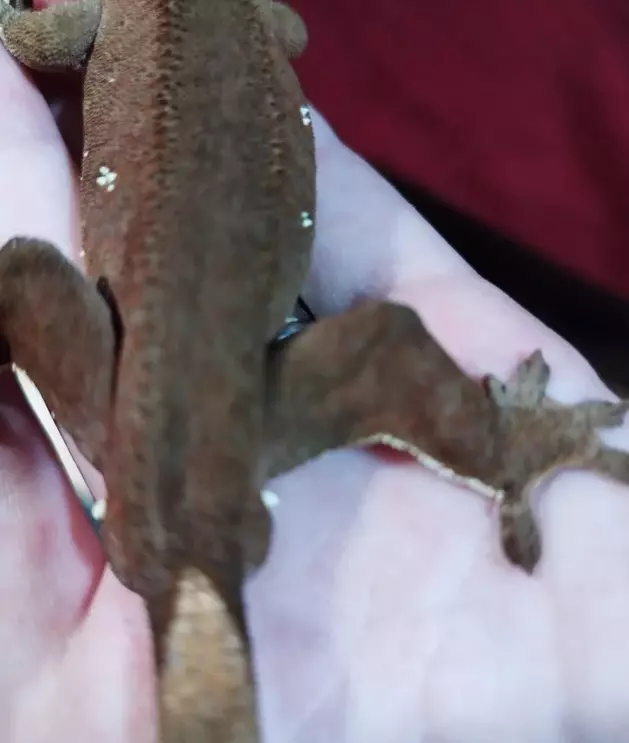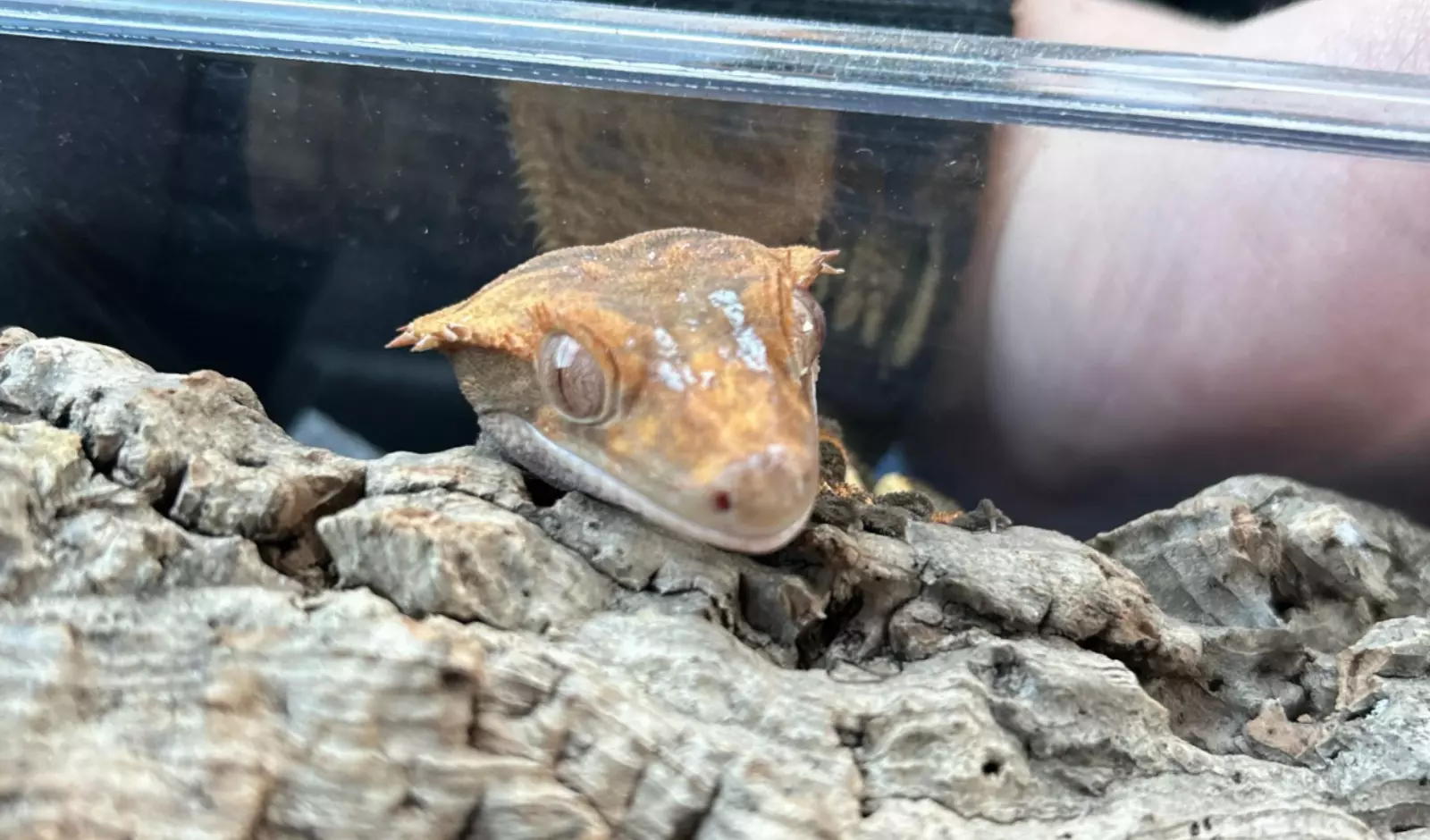One of the common problems that crested gecko owners typically encounter is white spots on their geckos’ skin.
What are these white spots and what do they mean? Are they a sign of something serious or harmless?
Or even how can you treat them and prevent them from happening again?
In this article, we will answer these questions and more, by exploring the possible causes and treatments of white spots on crested geckos.
Let’s dive in…
Causes of White Spots on Crested Geckos

There are three main causes of white spots on crested geckos: stuck shed, fungal or bacterial infection, and mating spurs.
Each of these causes has different characteristics, symptoms, and risk factors.
Here is a closer look at each of them.
1) Stuck Shed

It happens when bits of the old skin stick to the new skin after a crested gecko sheds. This can result in white spots, especially on the gecko’s tail, feet, and head.
Stuck shed isn’t just a cosmetic issue – it can mess with the gecko’s blood flow, leading to discomfort, irritation, and possible infection.
Low humidity, dehydration, or using the wrong shedding substrate in the gecko’s living space are common causes of stuck sheds.
To treat this issue:
- Soak the crested gecko in a shallow container of warm water for 10 to 15 minutes. This will soften the stuck shed and make it easier to peel off.
- Gently rub the stuck shed with your fingers, a cotton swab, or a soft toothbrush. Do not pull or force the stuck shed, as this can hurt the crested gecko and damage the new skin underneath.
- Use a shed aid product, such as Repti Shedding Aid or Zoo Med Repti Shed, to help loosen and remove the stuck shed. Follow the instructions on the product label and apply it to the affected areas.
Repeat the process until all the stuck shed is removed.
If the stuck shed is too stubborn or hard to reach, you may need to repeat the process several times over a few days.
Tip: make sure your crested gecko has a humid environment, plenty of water, and a rough surface like cork bark or coconut fiber to help them rub off their old skin.
2) Fungal or Bacterial Infection
A fungal or bacterial infection is when tiny organisms invade a crested gecko’s skin, causing inflammation, infection, and harm to the tissues.
This can result in white spots on the gecko’s skin, accompanied by signs like redness, swelling, discharge, and an unpleasant smell.
Ignoring this can be really serious, even life-threatening. Poor hygiene, stress, or injuries in the gecko’s living space usually cause these infections.
To keep your crested gecko healthy, provide a clean, hygienic environment that prevents the growth and spread of harmful microorganisms.
Additionally, make sure the gecko’s space is stress-free and safe to reduce the risk of injuries and support their immune system.
3) Mating Spurs
Breeding spurs are small, bony projections located at the base of the crested gecko’s tail. They play a role in gripping and stimulating the mate during the breeding process.
When a male gecko engages in breeding activities, these spurs come into contact with the skin of the mate.
The physical interaction between the breeding spurs and the mate’s skin can sometimes lead to minor abrasions or irritation.
These interactions may result in small white spots on the gecko’s skin, especially in areas where the spurs make contact.
It’s worth noting that while these white spots are a common outcome of the natural breeding behavior of crested geckos, they are typically harmless and do not indicate any health problems.
However, if the spurs are excessively long, sharp, or unclean, they might cause more significant irritation or even lead to infection.
F.A.Q.s
Q: How can I check if my crested gecko has skin issues?
If your crested gecko has stuck shed, you’ll notice dry and flaky white or gray patches on its skin.
For fungal or bacterial infections, look out for moist, pus-filled spots in white or yellow.
Q: How do I determine the gender of my crested gecko?
To find out if your crested gecko is male or female, check the base of its tail.
Males have a noticeable bulge housing the hemipenes, the male reproductive organs. In contrast, females lack this bulge.
Males also have larger and more visible mating spurs, the small, horny projections on the tail base.
However, these features might not be visible until your gecko is at least 6 months old.
Q: How often do crested geckos shed, and how can I assist in the process?
Crested geckos shed their skin every 4 to 6 weeks, depending on factors like age, growth, and health.
Help them shed by creating a humid environment, offering ample water for hydration, and providing a rough surface, such as cork bark or coconut fiber, for them to rub off old skin.
Q: How can I prevent fungal or bacterial infections in my crested gecko?
Ensure a clean and sanitary environment for your crested gecko to prevent infections.
Clean the enclosure and accessories weekly, removing waste, food, and water daily.
Opt for substrates like paper towels, newspaper, or reptile carpet, changing them frequently.

